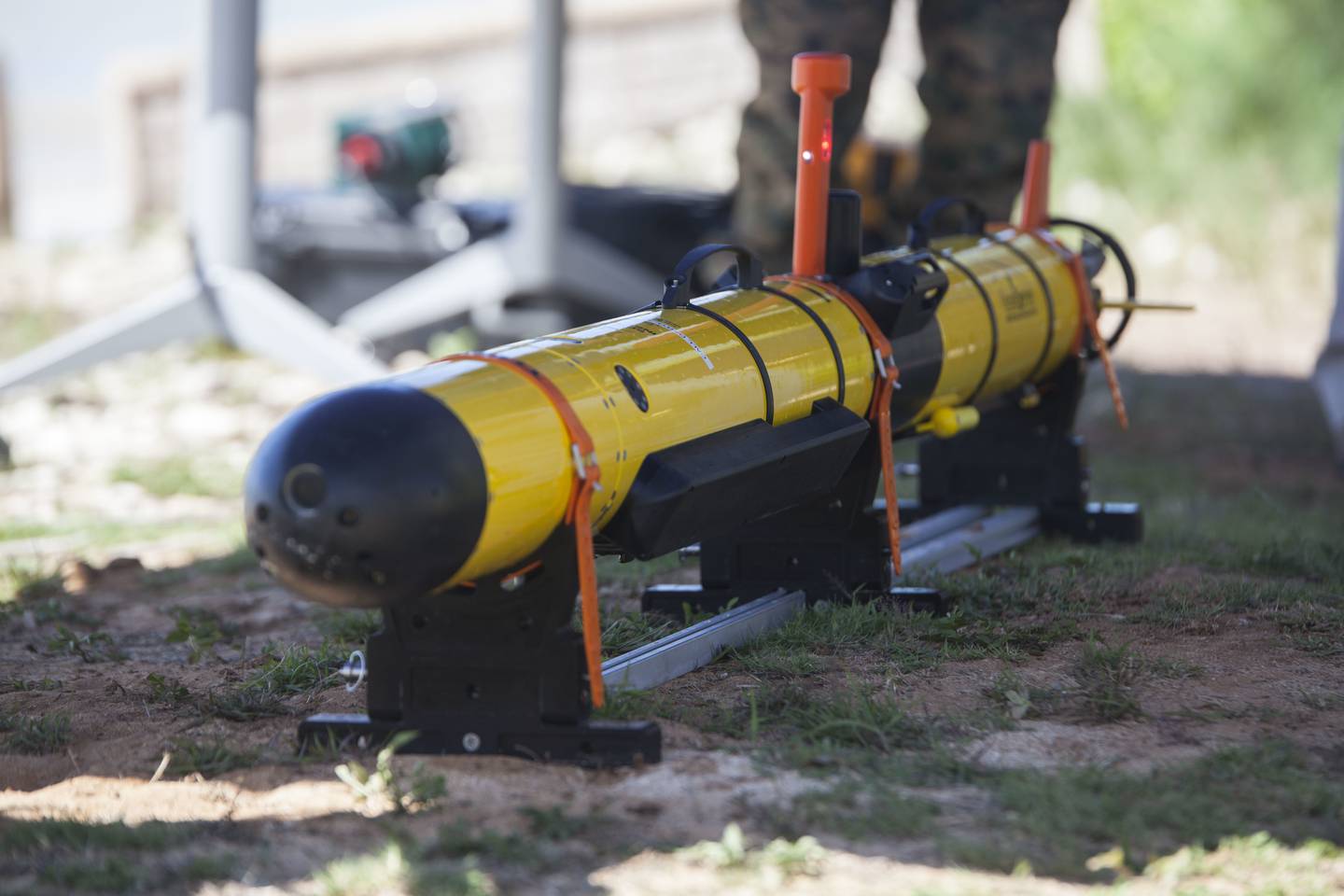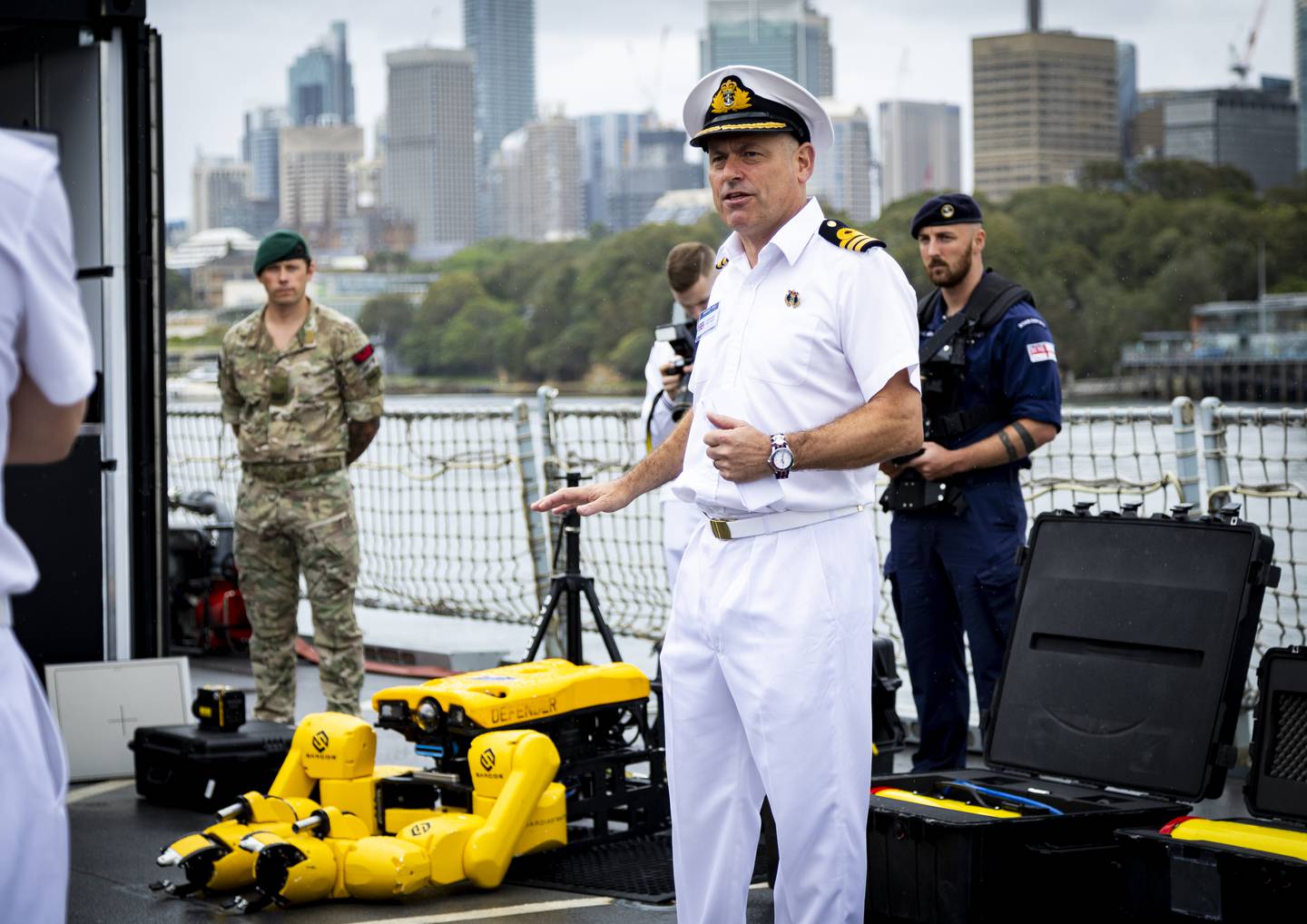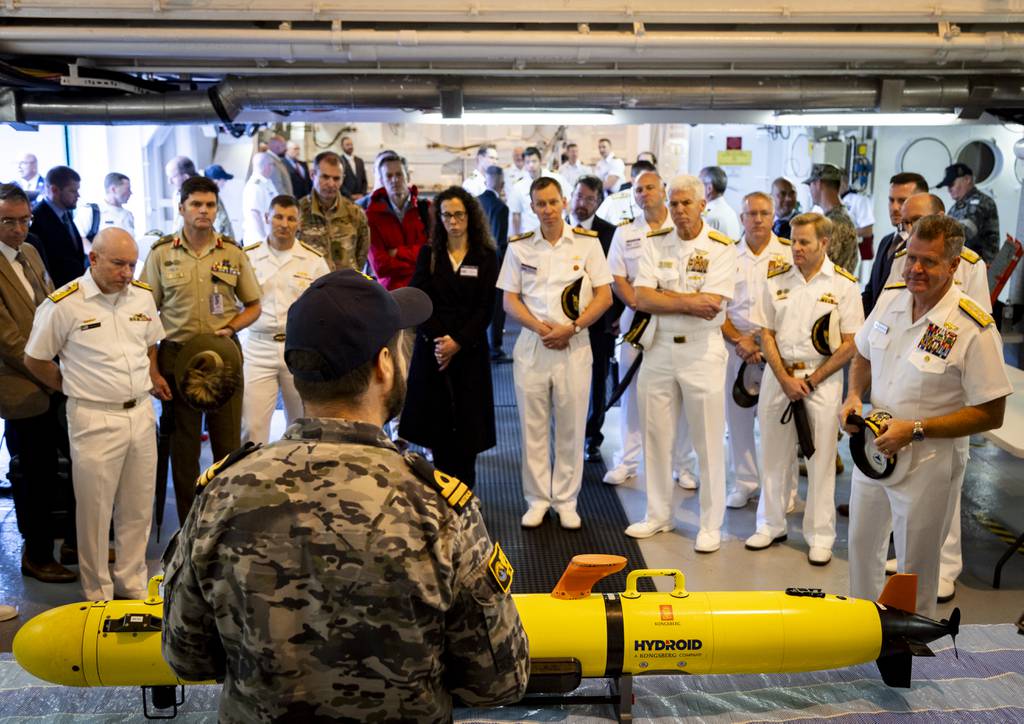Though the submarine portion of the AUKUS trilateral alliance will take decades to fully come to fruition, development of the advanced technology under the agreement is in full swing, as Australia, the U.K. and the U.S. seek quick wins for their fleets, officials said.
Pillar 2 of the agreement focuses on advanced tech the nations can develop and field together. There are eight working groups focused on cyber, quantum, artificial intelligence, electronic warfare, hypersonics, undersea warfare, information sharing, and innovation, each with a list of ideas to quickly test and push to operators.
Leaders told Defense News how this process is playing out in the undersea warfare working group and how they aim to bring new capabilities to the three navies as soon as this year.
Dan Packer, the AUKUS director for the Commander of Naval Submarine Forces who also serves as the U.S. lead for the undersea warfare working group, said April 4 that the group has four lines of effort: a torpedo tube launch and recover capability for a small unmanned underwater vehicle; subsea and seabed warfare capabilities; artificial intelligence; and torpedoes and platform defense.

On the small UUV effort, the U.S. Navy on its own in 2023 conducted successful demonstrations: one called Yellow Moray on the West Coast using HII’s Remus UUV; and another called Rat Trap on the East Coast using an L3Harris-made UUV.
L3Harris’ Integrated Mission Systems president Jon Rambeau told Defense News in March that his team had started with experiments in an office using a hula hoop with flashlights attached, to understand how sensors perceive light and sound. They moved from the office to a lab and eventually into the ocean, with a rig tethered to a barge that allowed the company’s Iver autonomous underwater vehicle to, by trial and error, learn to find its way into a small box that was stationary and then, eventually, moving through the water.
Torpedo tube launch
Rambeau said the UUV hardware is inherently capable of going in and out of the torpedo tube, but there’s a software and machine learning challenge to help the UUV learn to navigate various water conditions and safely find its way back into the submarine’s torpedo tube.
Virginia-class attack submarines can silently shoot torpedoes from their launch tubes without giving away their location. If submarines can also fill their tubes with small UUVs, they’d gain the ability to stealthily expand their reach and surveil a larger area around the boat.
During a panel discussion at the Navy League’s annual Sea Air Space conference on April 8, U.K. Royal Navy Second Sea Lord Vice Adm. Martin Connell told Defense News that his country, too, would accelerate its work on developing this capability. He said the U.K. plans to test it on an Astute-class attack submarine this year, and then based on what worked for the U.K. and the U.S., they’d determine how to scale up the capability.
Packer said this effort will “make UUV operations ubiquitous on any submarine. Today, it takes a drydock shelter. It takes divers. It takes a whole host of Rube Goldberg kinds of things. Once I get torpedo tube launch and recovery, it’s just like launching a torpedo, but they welcome him back in.â€
He added that the team agreed not to integrate this capability onto Australia’s Collins-class conventionally powered submarines now, but Australia will gain this capability when it buys the first American Virginia-class attack submarine in 2032.

On subsea and seabed warfare, Packer said all three countries have an obligation to defend their critical undersea infrastructure. He noted the U.K. and Australia had developed ships that could host unmanned systems that can scan the seabed and ensure undersea cables haven’t been tampered with, for example.
Connell said during the panel the British and Australian navies conducted an exercise together in Australia involving seabed warfare. This effort took just six months from concept to trial, he said, adding he hopes the team can continue to develop even greater expeditionary capability through this line of effort.
Packer said a next step would be collectively developing effectors for these seabed warfare unmanned underwater vehicles — “what are the hammers, the saws, the screwdrivers that I need to develop for these UUVs to get effects on the seabed floor, including sensors.â€

The primary artificial intelligence effort today involves the three nation’s P-8 anti-submarine warfare airplanes, though it will eventually expand to the submarines themselves.
Packer said the nations created the first secure collaborative development environment, such that they can all contribute terabytes of data collected from P-8 sensors. The alliance, using vendors from all three countries’ industrial bases, is working now to create an artificial intelligence tool that can identify all the biological sources of sounds the P-8s pick up — everything from whales to shrimp — and eliminate those noises from the picture operators see. This will allow operators to focus on man-made sounds and better identify potential enemy submarines.
Packer said the Navy never had the processing power to do something like this before. Now that the secure cloud environment exists, the three countries are moving out as fast as they can to train their AI tools “to detect adversaries from that data … beyond the level of the human operator to do so.â€
For now, the collaboration is focused on P-8s, since foreign military sales cases already exist with the U.K. and Australia to facilitate this collaboration.
Connell, without specifying the nature of the AI tool, said the U.K would put an application on its P-8s this year to enhance their onboard acoustic performance.
Packer noted the U.S. is independently using this capability on an attack submarine today using U.S.-only vendors and algorithms, but the AUKUS team plans to eventually share the full automatic target recognition tool with all three countries’ planes, submarines and surface combatants once the right authorities are in place.

And finally, Packer said the fourth line of effort is looking at the collective inventory of torpedoes and considering how to create more capability and capacity. Both the U.S. and U.K. stopped building torpedoes decades ago, and the U.S. around 2016 began trying to restart its industrial base manufacturing capability.
“The issue is that none of us have sufficient ordnance-, torpedo-building capability,†Packer said, but the group is looking at options to modernize British torpedoes and share in-development American long-range torpedoes with the allies — potentially through an arrangement that involves a multinational industrial base.
Vice Adm. Rob Gaucher, the commander of U.S. Naval Submarine Forces, said during the panel discussion that these AUKUS undersea warfare lines of effort closely match his modernization priorities for his own submarine fleet.
Pursuing these aims as part of a coalition, he said, strengthens all three navies.
“The more we do it, and the faster we do it, and the more we get it in the hands of the operators, the better. And then having three sets of operators to do it makes it even better,†Gaucher said.
Megan Eckstein is the naval warfare reporter at Defense News. She has covered military news since 2009, with a focus on U.S. Navy and Marine Corps operations, acquisition programs and budgets. She has reported from four geographic fleets and is happiest when she’s filing stories from a ship. Megan is a University of Maryland alumna.








